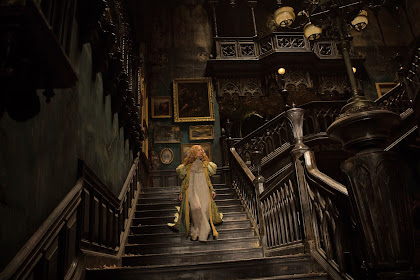Victorian Gothic Romance

While partaking in a sensation of unpleasantness as frigid ghastliness can be a great encounter, in some cases, the heart needs something a touch more nostalgic. To quiet these longing hearts, I might want to introduce the class of Gothic Sentiment. While "Gothic" may raise pictures of individuals wearing dark, paying attention to "The Fix" and "Siouxsie and the Banshees," the term returns a lot further than the post-punk 80s.
The Gothic class takes its name from Gothic engineering, which is portrayed by pointed curves and flying supports. This design, frequently found in old French and English basilicas, was related to sensations of dreadfulness and nervousness, as nobody had found in structures like this previously. This sensation of anxiety is what Gothic writing endeavours to convey. Horace Walpole is much of the time thought about as the dad of the Gothic Sentiment with his 1764 distribution of The Palace of Otranto. By adding something as unadulterated as sentiment to the setting of the Gothic novel or film, we are left with an upsetting story which we identify unequivocally with the leads' mission for adoration.
While there are numerous bearings Gothic Sentiments can take, there are sure elements which are viewed as staples of the class. Keep perusing to find out more … and to track down proposed readings and viewings.
In a customary Sentiment, characters assume an unimaginably significant part, as they move the activity along and make the real sentiment part of the story. This thought applies to the Gothic Sentiment too, however, the characters typically accompany somewhat of a bend.
Normally, the lead of a Gothic Sentiment is a lady endeavouring to sort out common decency for her heart, and what society expects of her. She will typically have a power, frequently an overprotective dad, remaining among her and her affection, however, she, or another person, will track down a strategy for getting around him. Whether or not the story is in the first or third individual, we experience dread close by her and are intended to identify with her.
Named after the Heartfelt writer Master Byron, the Byronic legend prompted the formation of the screw-up. There are parts of the Byronic legend that aren't positive, yet the characters are written so as to make it difficult to detest them, even after they accomplish something horrible. A few characteristics of the Byronic legend incorporate a rough attitude, tempting nature, negative, vile mystery or want, pride, irritability, and vindictiveness. On the other side, they are frequently able to do, serious areas of strength for profound, have a tormented soul shouting out for empathy, and are seen as singular, enduring creatures needing love. An effective method for depicting the Byronic legend is as a fallen holy messenger.
Frequently, there is another person entangling what is going on, framing a circle of drama with the champion and legend. This optional old flame can be for the courageous woman, frequently seen as a caring respectable man she has known since youth, or for the legend, frequently seen as an evil enchantress.
Taking into account that the class was motivated by engineering, and
actual structures, it isn't difficult to figure out that the setting would be
vital to Gothic Sentiments. Beneath, you'll find quite possibly of the most
widely recognized setting utilized in the Gothic novel, and what it might
address.
Frequently neglected and in dilapidation, the dim palace or old house is
in many cases utilized as the scenery for Gothic Sentiments. These structures
are typically gone down through ages to the legend, and the home's unfortunate
state can mirror the vile goals of the proprietor, or address the manners by
which the champion's immaculateness might be undermined. The champion is much
of the time caught here by the vicious climate, thick timberland around the
property, wild creatures, or different characters.
Gothic Sentiment is tied in with getting the right state of mind across
to the peruser. The story ought to be intense and exciting with a strange
component of some kind or another, while as yet zeroing in firmly on the
heartfelt part of the story. Here are a few manners by which mindset is
accomplished in this class.
Gothic Sentiments are spine chillers, and this is reflected in the frame of mind and tone of the composition. Periodically, this is passed on through articles and sounds in the setting. Normal models incorporate weighty breeze and downpour, corroded pivots, murmurs/groans/yell with no known source, the sound of strides, thumping chains, lights in deserted rooms, lights being smothered, rooms with no leave, entryways pummelling, destroyed structures, the sound of far off canines or wolves, lightning storm, and frenzied giggling.
Both positive and pessimistic, the feelings of a Gothic Sentiment are at an unsurpassed high. Characters can be overwhelmed by outrage, distress, or fear. There is many times crying and frenzy, some of the time bringing about the courageous woman blacking out. The sentiment the characters experience is additionally an extreme, strong love being matched with the vulnerability of whether it will be responded to. It might likewise bring about unlawful love or desire, undermining the goodness of the courageous woman.
While phantoms unquestionably can show up in Gothic Sentiments, this isn't the main manner by which the powerful can be shown. There might be an old prediction or sign anticipating the ruin of a person or cautioning the courageous woman to remain away. The champion might have dreams, both waking and dreaming, or occasions to come. There may likewise be unexplained sounds or happenings. While a few Gothic Sentiments might not have an extraordinary component by any stretch of the imagination, their appearance is sufficiently normal to make this rundown.



Comments
Post a Comment